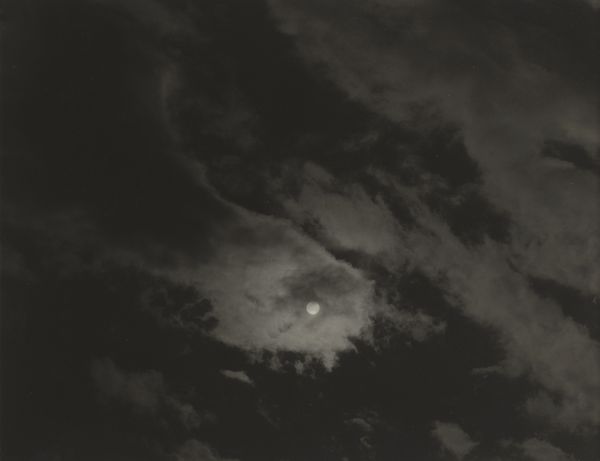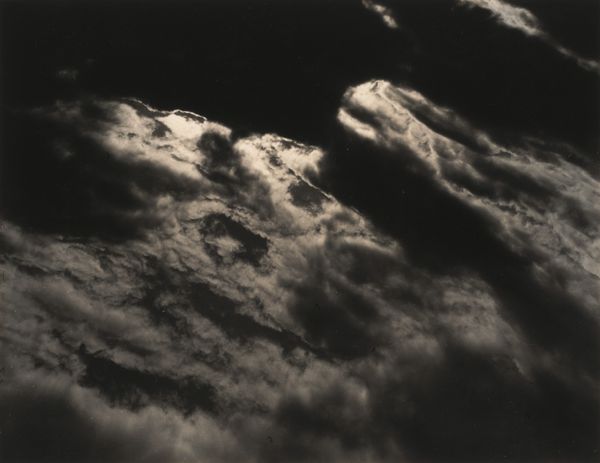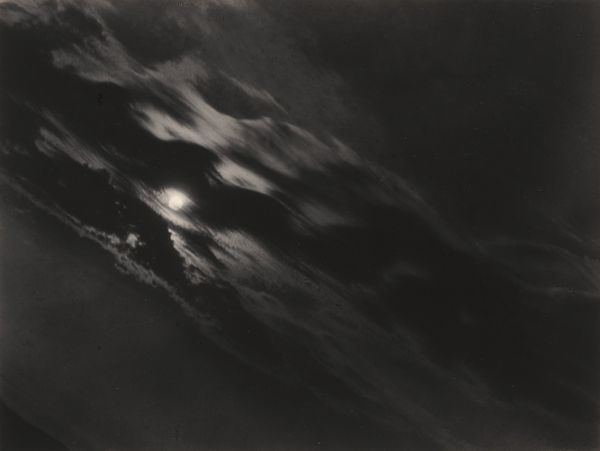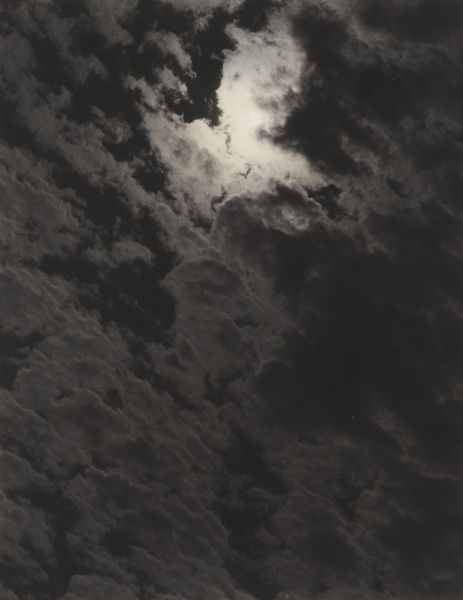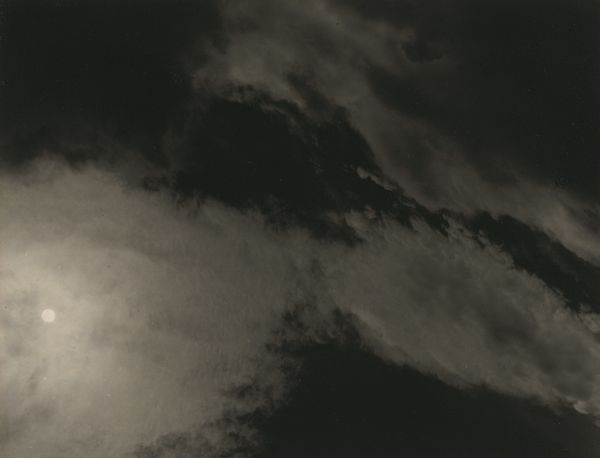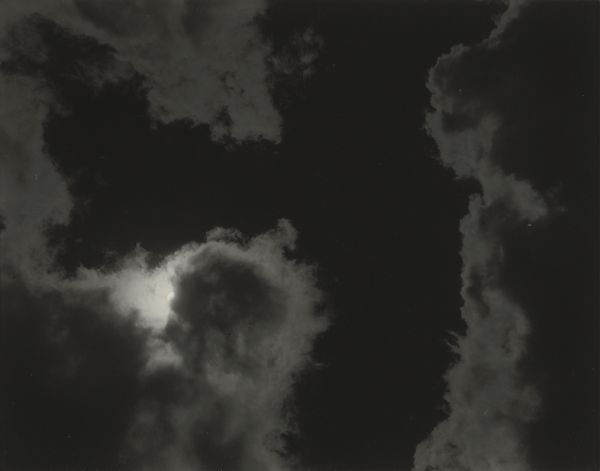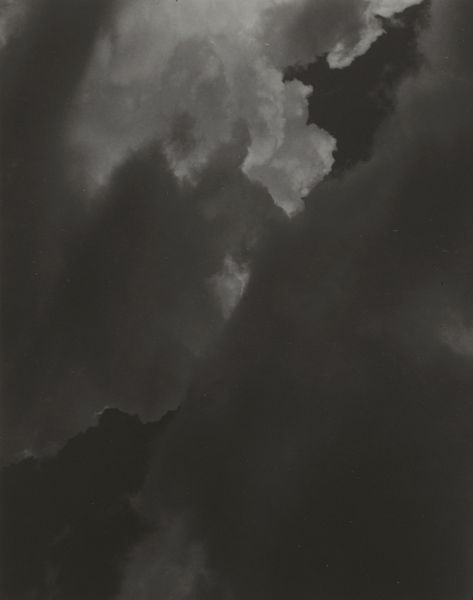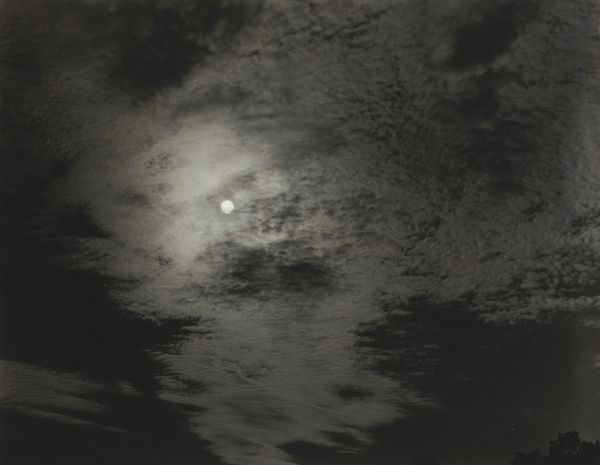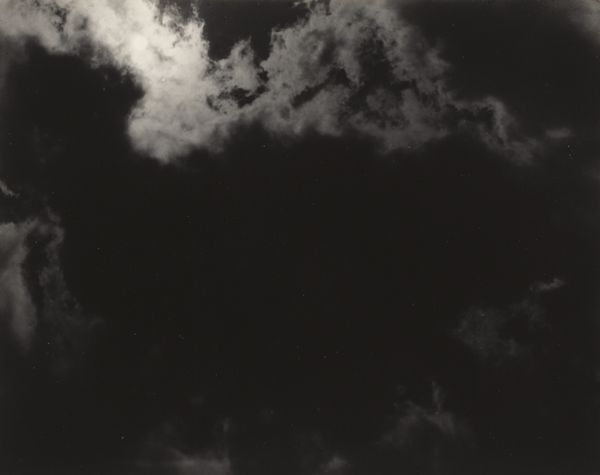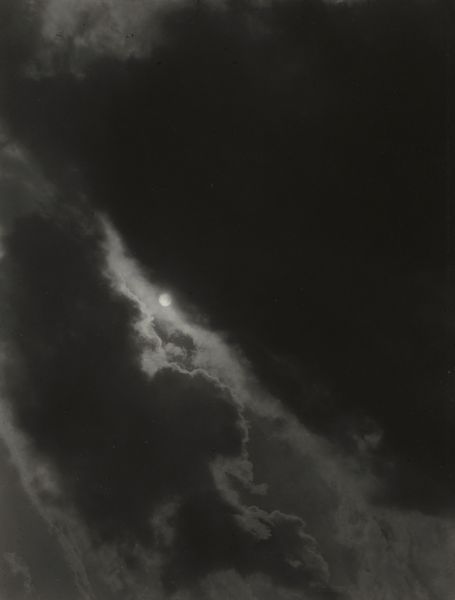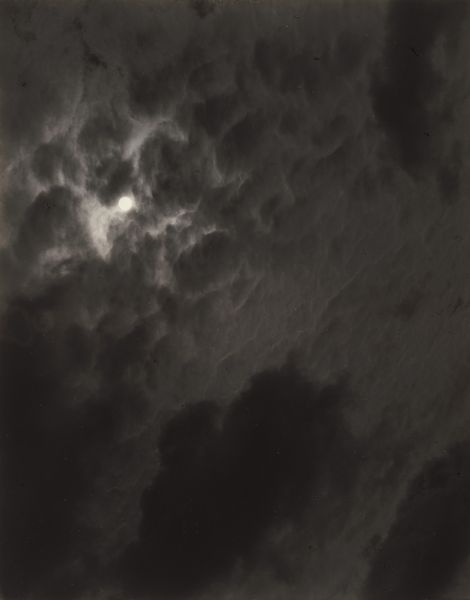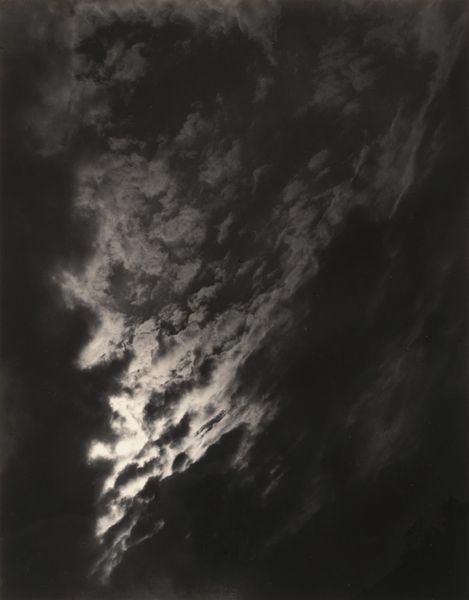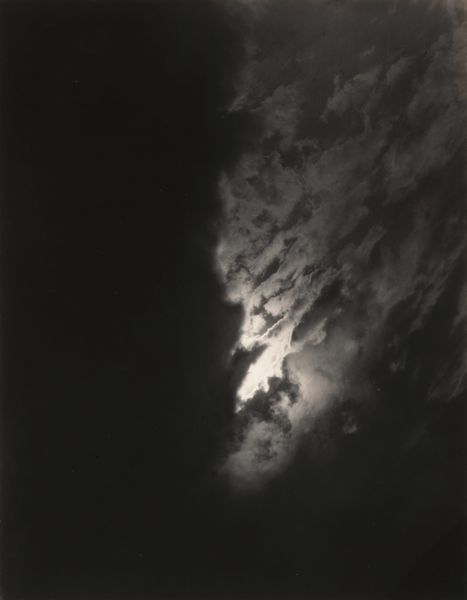
photography, gelatin-silver-print
#
pictorialism
#
landscape
#
photography
#
gelatin-silver-print
#
monochrome photography
#
abstraction
#
modernism
#
monochrome
Dimensions: sheet (trimmed to image): 9.2 x 11.6 cm (3 5/8 x 4 9/16 in.) mount: 32.9 x 27 cm (12 15/16 x 10 5/8 in.)
Copyright: National Gallery of Art: CC0 1.0
Curator: Looking at this gelatin-silver print, the atmospheric drama practically leaps off the surface. There's such weight and emotion evoked from these dark clouds and radiant opening. Editor: That's Alfred Stieglitz's "Equivalent," taken around 1929. Part of his series meant to convey inner states rather than just record external reality. Curator: So, not just cloud studies, then. The title "Equivalent" suggests he wanted these images to function as metaphors. Is there some precedent for this abstraction of the natural world? Editor: Stieglitz was deeply involved in the Modernist project—seeing art as a vehicle for expressing something beyond the representational. These cloud formations aren’t simply pictures of weather; they’re intended to reflect, as Stieglitz put it, “a translation of my feeling about life.” The clouds operate as symbols for his innermost thoughts. Curator: Thinking of clouds as symbols... it takes me back to Romantic painters like Caspar David Friedrich. They also sought to connect the human spirit to the grandeur of nature, albeit through more obviously symbolic landscapes. Editor: Absolutely. And like the Romantics, Stieglitz gives us a dramatic scene, the chiaroscuro producing deep psychological resonance. What makes it especially interesting is Stieglitz's conviction that even the most ordinary subject, photographed directly without manipulation, could be elevated into a symbolic equivalent. Curator: What I appreciate about the series is the invitation for personal interpretation. The lack of any traditional landscape elements focuses the viewer's attention solely on these expressive skyscapes, making the photograph itself into an emotional landscape. It makes one wonder what exactly Stieglitz was going through to prompt him to capture such a moody moment. Editor: That openness is part of the power, isn't it? We all bring our own weather to these images. They remain poignant markers of feeling, proof that the sky has always served as a screen for our projections, as an enduring source of our collective memories.
Comments
No comments
Be the first to comment and join the conversation on the ultimate creative platform.
